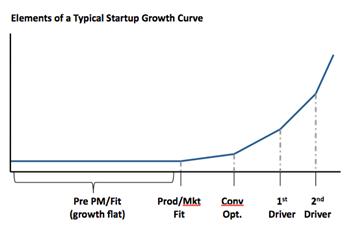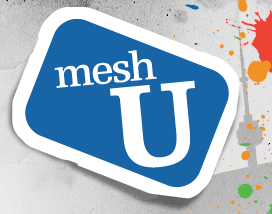Whether you think of the UFC and mixed martial arts (MMA) as bloodsport or entertainment, there’s no denying that it is big business. Sure it’s still a bunch of individuals pounding the hell out of each other, but it’s an interesting brand building exercise capturing the attention and wallets of 18-34 year old men.
Dana White along with Frank and Lorenzo Fertitta, as Zuffa LLC, purchased a near bankrupt UFC for $2 million in 2001. By 2006, the UFC grossed more annual pay-per-view revenue than any other ‘”combat sport” promotion, think boxing, mixed martial arts, etc. The 2008 estimated revenue was close to $250 million through a mix of pay-per-view, live event tickets, television deals, advertising, video game promotion deals, and other varied revenue streams. It had become a huge business. Big enough that Mark Cuban has creating HDNet Fights as a promotion and leveraging the HD television outlet to highlight other combat sport promotions.
Love it or hate it this is big business. It’s no longer “human cockfighting” as it was referred to by Sen. John McCain (R-Az).
So how do organizations like Zuffa LLC and Oscar De La Hoya’s Golden Boy Promotions make money. And what can software startups learn from these marketing organizations. MMAFrenzy provides “A Look Behind the Curtain: Zuffa’s Finances Come Into Focus” that provides a breakdown of the financial side of a private company. And Portfolio.com provides insight into the wheeling and dealing that is Golden Boy Promotions
Television Licensing & Promotion
Television promotion is about “the people who create something worth watching and the audience”. Both Golden Boy and Zuffa have crafted television deals to help them reach fans beyond their strong base. Golden Boy Promotions has a deal with HBO and Zuffa has a deal with SpikeTV to broadcast their shows to cable audiences. For both promotions this allows them to focus on building brand awareness, create superstars and sell their live pay-per-view events. In the case of Zuffa, this has resulted in the creation of new content specifically for their television broadcast partner with the reality television show, The Ultimate Fighter (orignially created for $10M), and a host of other shows out of the archive materials from live events. The networks either sell premium cable subscriptions (HBO) or advertising (SpikeTV) based on their audience reach and demographics. Better content equals more diverse people watching, which allows for a shift in advertising demographics (details on Traditional Television Business Model and Video on Demand). The Ultimate Fighter has become the “most-watched original series on SpikeTV” with over 1.8 million viewers.
Pay-per-view Revenues
UFC has 5.1 million pay-per-view (PPV) buys in 2007. The PPV are split with the PPV distributor. The PPV buys number is reported for most major sporting events, Yahoo!Sports has a summary of the 2008 business which the UFC was reporting $237.9 million on 5,315,000 buys (average price of $44.75/purchase). Assuming a 60/40 split between Zuffa and the PPV distributor that generated approximately $142,740,000 in revenue.
Live Event Ticket Sales
Average ticket price in 2007 was $250/ticket. For example, UFC 99 attracted 12,800 fans and had a live gate of $1.3 million for an average seat price of $101.56. Different venues and fighter cards have different results, UFC 90 drew 15,359 fans and had a live gate of $2.85 million for an average seat price of $185.92/ticket. (As a side note, these figures include the seats/tickets that the UFC gives away as part of the promotion. If you assume that 30% of the seats are given away to promotion companies and others the price per seat changes to $145.09 and $265.61 for each event respectively). The interesting part is that these numbers do not include any of the costs associated with running a live event: arena, security, medical staff, athletic commissions, promotion, etc.
Other Revenue Streams
The great thing once you have an audience, content and a recognized brand you can look for an infinite number of ways to monetize it. You start to ask questions like how do you find new audiences? How do you increase the average revenue per user (ARPU) of your existing users? What are new channels for reaching the audience? What other partnership and revenue generating opportunities exist?
Video game rights licensing. Subscription internet video. Wait it seems that was tried and failed. No it looks like another opportunity presented itself with Heavy.com. Apparel deals with TapouT. Once you’ve built an attractive global brand, the world is your oyster. Zuffa has negotiated broadcast distribution rights in Australia.
What can startups learn?
- Build a product that people want to pay you for
I know this sounds cliché. And is not always as straightforward. Just look at the broadcast licensing and pay-per-view revenues for sports promotion. There are complex relationships between the people that produce the content and the people that watch the content. It involves cable companies, advertisers, intermediaries. But it starts with creating a product that people will use, in this case a product that people will watch/use and pay you for.
- Engage and support your loyal fan base
The goal of the adoption funnel is to move from awareness to loyalty. You need to nurture and support the audience that is passionate about your product/service. Go read Kathy Sierra or Saul Colt to learn about how to inspire your customers to become evangelists. It’s about figuring out how they help their customers “kick butt better than their competitors”. Who are your super stars? What are you doing to help them kick butt?
- Don’t be afraid to self promote and create superstars
You’ve got to love Golden Boy Promotions, the UFC and Saul Colt. They are masters of self promotion. Dana White, who owns 10% of Zuffa, has become an instant celebrity from his appearance on SpikeTV’s The Ultimate Fighter. The non-stop promotion of UFC Pay-Per-View events through the SpikeTV audience (2.8 viewers million for TUF9) help reinforce known revenue streams while building characters and superstars. Do all of the commercials feel like their cross promoting other UFC events? Well there is a reason for that, 75% of the UFC revenue comes from PPV sales. Startusp need to find ways to promote the features and solutions that help solve problems, inspire users and make superheroes. Rinse, lather, repeat. By refining their messaging and telling a better story, startups make it easier for customers to tell their story. Saul Colt (who is a big deal) does a great job promoting his companies (Zoocasa, FreshBooks) the power of community and sharing and asking the audience to promote using the channels that are important to users.
- Diversify your revenue streams
There are many different ways to diversify revenue streams. Look at consulting companies that run training events (educating others about great design). Music television channels that are game companies (isn’t it all about music distribution regardless of channel). Go read Peter Frisella’s 2 awesome posts for a review of the different types of business model (part 1, part 2) to figure out your business model. Have a look at Alex Osterwalder’s Business Model Generation and look at his presentations on SlideShare to learn his Business Model Canvas.
Building a successful startup is hard work! But after watching combat sports, building a startup sure beats the hell out of getting punch in the head for a living.




